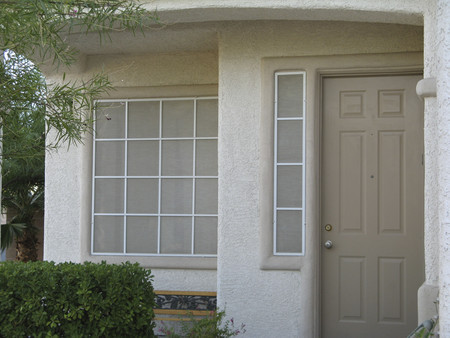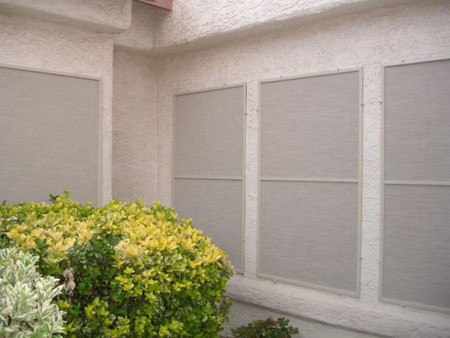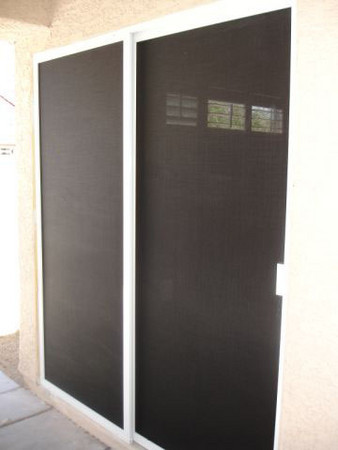BE COOL



There’s just no denying the fact that we live in the Mojave Desert — especially during the summer when the temperature is in triple digits on a daily basis.
But that doesn’t mean we have to duplicate those harsh conditions inside our homes. With solar screens it’s easy to keep the sun and heat out and the cool in.
Solar screens, which attach to the outside of a home over windows, stop about 40 percent of the sun’s heat from entering a home, said Rafael Ferrigno, general manager of Bugsy’s Blinds in Las Vegas.
“The screens keep sunlight from hitting the windows,” he said, explaining how the sunlight generates heat that transfers to the glass and is circulated throughout the home by fans.
Solar screens replace the standard wire screens typically installed over windows.
The screens can stop upwards of 97 percent of the sun’s ultraviolet rays from entering a home, said Steve Mevius, owner of Polar Shades in Las Vegas.
Because there are so many types of sun-shading fabrics available on the market, Mevius recommends dealing with a professional who can analyze a homeowner’s needs and wants before making a recommendation.
One of the most commonly used fabrics for solar screens is Phifer SunTex, which comes in an 80 or 90 percent shading coefficiency. This means they block 80 or 90 percent of the sun’s UV rays.
Without the sun entering a home, there also is less to worry about fading on furniture fabrics, drapery and carpets.
In addition to helping keep the sun out, the screens are good at reducing the amount of dust and insects entering the home, both Mevius and Ferrigno said. They also provide privacy during daytime hours, acting similar to one-way glass.
Due to their tighter weave, Ferrigno admits the solar screens do slightly obscure views, but the savings in energy costs usually offset any disadvantages. He estimates that the screens will pay for themselves in about two or three months.
For those who don’t want the screens to obstruct their views, there are options such as retractable shades, Mevius said.
“Retractable shades are more expensive than those that are permanently fixed, but at night, when you want the shade out of the way, you have that,” he said.
On average, permanently attached solar screens are priced between $4.50 to $6 per square foot. The price depends on the fabric chosen and the amount of framing. Another factor is the number of windows being covered.
Mevius recommends that all of a home’s windows be covered with solar screens, although he said many customers opt to just cover those that face the sun.
“I kind of equate the house box to an ice chest. Normally, you would insulate all sides of an ice box. When you do the entire home, it provides an extra layer of insulation,” he said.
Ferrigno said he often gets customers returning to cover the remaining windows on their homes after seeing the difference the screens make on one side of the house.
Not only should all the windows be done, Conrad Trevino, operations manager at Bugsy’s Blinds, said sliding glass doors should be covered as well. A stationary panel is installed over the part of the sliding door that does not move, while a sliding screen door is installed over the corresponding glass door.
The solar screen fabric comes in five standard colors — brown, black, gray, stucco and beige — which should match the exteriors of most homes in the valley.
In addition, the frames can be created to match window panes, helping maintain the aesthetic value of the home’s exterior and make them slightly less obvious.
Trevino said homeowners should consider carefully when selecting the color of their screen fabric. As a rule, he finds that the darker fabrics serve as a visual block, as well as attract heat.












